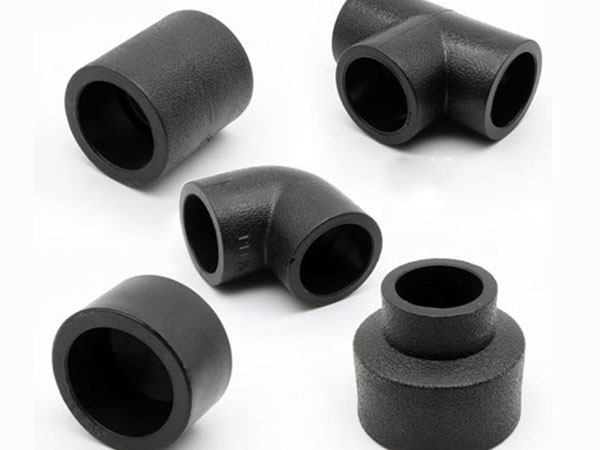In modern water supply, irrigation and gas transmission systems, Polyethylene (PE) pipes have gradually replaced traditional metal and PVC pipes due to their excellent performance. Among them, 3/4 polyethylene pipe fittings have become one of the most widely used specifications in household, agricultural and industrial fields due to their moderate size, flexible installation and strong compatibility. This article will provide an in-depth introduction to the advantages and application value of 3/4 polyethylene pipe fittings from aspects such as material properties, common types, application fields, and purchasing suggestions.
What is 3/4 polyethylene pipe fittings?
3/4 polyethylene pipe fittings are specifically designed for connecting PE pipes with an outer diameter of approximately 20 millimeters (3/4 inches). Its function is to achieve the connection, branching, turning, transition or sealing of pipelines, ensuring the airtightness and pressure resistance of the entire conveying system. Depending on the installation environment and application, common connection methods include electrofusion connection, hot-melt connection, clamp connection and threaded connection, etc.

The advantages of polyethylene material
PE pipe fittings are made of high-density polyethylene (HDPE) or low-density polyethylene (LDPE) and have the following significant advantages:
Strong corrosion resistance: It is not eroded by acids, alkalis, salts and other chemical substances, and is particularly suitable for agricultural irrigation and the chemical industry.
Long service life: It can be used for more than 50 years under normal conditions.
High flexibility: Adapt to undulating terrain and slight displacement, and is not prone to cracking.
Lightweight and easy to transport: Compared with metal pipe fittings, PE material is lighter and has a higher installation efficiency.
Safety and environmental protection: Non-toxic and odorless, meeting the standards for drinking water transportation.
UV resistance: Some enhanced PE pipe fittings have undergone UV protection treatment and can be used for a long time in outdoor systems.
Three quarters common types of polyethylene pipe fittings
According to different uses and connection methods, 3/4 polyethylene pipe fittings can be classified into the following categories:
Direct (Coupling) : It is used for connecting two sections of PE pipes of the same diameter.
Elbow: It is used to change the direction of pipes, and the common types are 45° and 90°.
Tee: It realizes the branching of pipelines and is suitable for irrigation or water supply diversion systems.
End Cap: Seal the end of the pipeline to prevent leakage.
Adapter: It is used for the transition connection between PE pipes and metal pipes, PVC pipes or valves.
Flange connection: Suitable for industrial pipeline systems that require disassembly and maintenance.
Electrofusion Fittings: They are equipped with internal resistance wires and achieve high-strength connections through heating and melting. They are often used in gas transmission.

Application field
Agricultural irrigation system
3/4 polyethylene pipe fittings are widely used in drip irrigation, sprinkler irrigation and micro-irrigation systems. They can be flexibly connected to the main or branch irrigation pipes, are pressure-resistant, sun-resistant and do not leak.
Domestic water supply and drinking water transportation
As PE material meets food-grade standards, 3/4-inch PE pipe fittings are often used in courtyard water supply, rural tap water systems, etc.
Gas transmission system
The 3/4-inch PE pipe fittings of the electrofusion type have extremely high sealing performance and can be safely used in medium and low pressure gas systems.
Cable protection pipeline
In communication and power engineering, PE pipe fittings can be used to protect optical cables and wires from external damage.
Industrial fluid transportation
It is applicable to the conveying systems of fluids such as chemical media, compressed air and cooling water.
How to choose high-quality 3/4 polyethylene pipe fittings?
Material certification: Products that have passed international standard certifications such as ISO 4427, EN 12201 or ASTM D2513 are preferred.
Wall thickness and pressure resistance grade: Select the appropriate SDR grade (such as SDR11, SDR17, etc.) based on the system pressure.
Connection method matching: Ensure that the connection method of the pipe fitting and the pipe material is consistent, such as hot-melt or electrofusion interface.
Brand and after-sales guarantee: Choose experienced manufacturers with stable exports, such as brands like Junrui Polymer Materials, to ensure product quality and technical support.
Appearance quality: High-quality pipe fittings have a smooth surface, free of bubbles and cracks, and the interfaces are round and flat.

Installation and maintenance suggestions
Before installation, it is necessary to check whether the specifications of the pipes and pipe fittings match the interfaces, and keep them clean and dry.
When connecting, the corresponding welding equipment or clamp tools should be selected according to the interface type to ensure a firm connection.
The construction temperature should be controlled between 5℃ and 40℃ to avoid poor welding caused by extreme temperatures.
After installation, a pressure test should be conducted to ensure that the system has no leakage before it can be put into use.
During long-term maintenance, regularly check whether the joints are aged or loose, especially for outdoor use systems.
3/4 polyethylene pipe fittings, with their excellent corrosion resistance, flexibility and sealing performance, have become indispensable connecting components in various water, gas and irrigation systems. Whether in household water supply, agricultural irrigation or industrial fluid transportation, it can provide reliable performance guarantee. Choosing high-quality PE pipe fittings that have passed international certification and installing and using them in accordance with standard specifications can significantly extend the system’s lifespan and reduce maintenance costs.






















